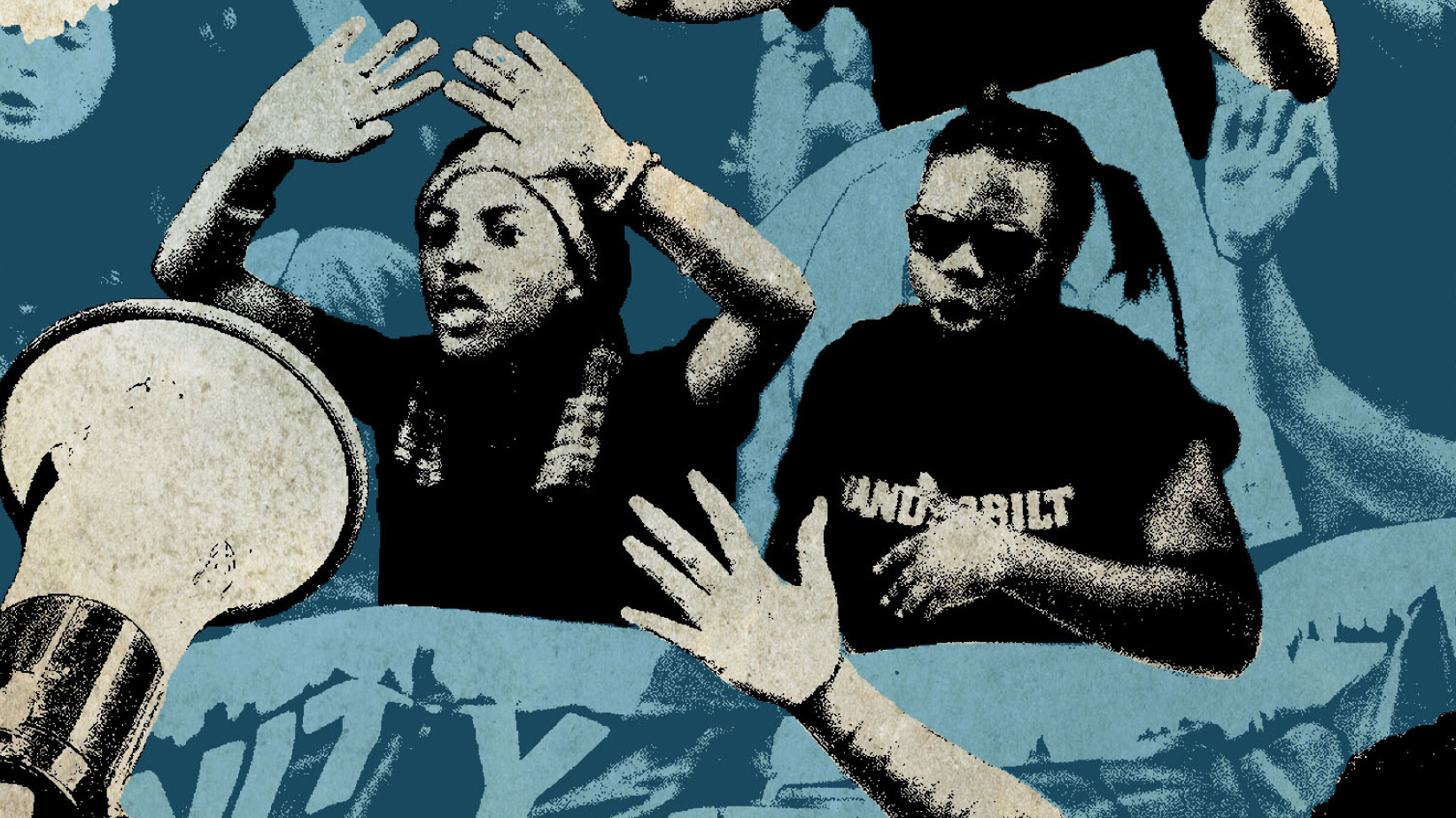—Dawson Barrett
The critical question of the 2018 election season is not only whether there will be a “blue wave,” but, if so, whether it will just be the light purple (partially red, too white) of the Center-Right that has been passed off as blue since the early 1990s, or if it could actually be the deep blue, progressive wave that is needed to meet the country’s many crises.
If it is the former, we will not need our surfboards to ride the wave. We will be lucky if there are even any lifeboats. Our many escalating catastrophes—a warming planet, the explosion of the US prison population, endless war, and the accumulation of wealth at the top—all stem from the same problem: a hyper-capitalist (“neoliberal”) political consensus, which has enjoyed bipartisan support for much of the last half-century.
Turning the tide will require countering both the massive profit motives of Big Business and the mountain of cash that corporate interests use to tip the political scales. This change will have to come in the streets as well as at the ballot box.
President Donald Trump may not like it, but disruptive protest has shaped American society since before the Revolution. It has been a major force for democracy, from the expansion of voting rights and the end of segregation laws to minimum wage standards and marriage equality.
Interrupting Judge Brett Kavanaugh’s confirmation hearings is the latest expression of this proud tradition, but Americans have been voting with their feet all year long. 2018 has seen several major protest waves, including teachers’ strikes, nationwide high school student walk-outs, the New Poor People’s Campaign, demonstrations at ICE facilities, and a rash of recent strikes by prisoners.
Viewed together, this “movement of movements” is staggering, and the issues that it is confronting—human caging, poverty, the de-funding of public institutions, global instability, and the (often dangerous) de-regulation of industry—are intimately related. Neoliberalism is at their core.
The youth-led movement for gun reform has typically been framed by its champions as an issue of school safety (essentially students’ rights) and, by its opponents, as an assault on the 2nd Amendment. At its core, this is also a debate about the rights of corporations—arms manufacturers, in this case—to profit without restrictions or accountability for the impacts of their products. It should be no surprise that industry-backed pundits and politicians almost exclusively offer solutions that will boost gun sales, and thus profits (perhaps even with public funds).
Meanwhile, school teachers from West Virginia to Oklahoma, and now Washington, are trying to push back against a long trend of cuts to public education—austerity and privatization efforts by Republicans and Democrats alike that have paralleled tax cuts and subsidies to further enrich the country’s highest earners. But while the US refuses to pay public school teachers a living wage and allows sky-rocketing tuition to saddle college students with lifelong debts, somehow there are public funds to help keep the $1.3 trillion “for-profit” education industry afloat—almost $2 billion per year just for standardized tests.
Along similar lines, the brazen cruelty with which the Trump administration has targeted immigrants of all ages has been cheered by white nationalists, but the US’ massive, bipartisan incarceration projects have long been inseparable from the interests of for-profit prisons. To get some idea of the scale of this industry, the Geo Group made $2.26 billion last year, CoreCivic (formerly Corrections Corporation of America) made almost $2 billion, and Southwest Key, in addition to siphoning public education dollars through its charter schools, has taken in almost $1 billion to cage immigrant children since 2015. Unsurprisingly, the prison industry has used its deep pockets to change laws in order to increase its profits.
This is the playing field of the New Gilded Age. To apply pressure on these mammoth forces, activists must take action that both builds their own capacity and isolates their opponents from allies. In recent months, for example, immigrant rights activists have been protesting both ICE facilities and for-profit detention companies. The Trump administration may get a boost from supporters for carrying out human rights abuses, but the corporations doing its dirty work might not. Creating a rift between these two centers of power weakens both of them.
Similarly, in May 2018, high school students in Florida occupied a Publix grocery store to demand that the company stop endorsing NRA-backed politicians. The students won, and Publix joined a long list of companies withdrawing their support for the gun lobby and weakening the NRA’s political appeal.
Importantly, this pressure from protest movements is also spilling over into electoral politics. After their victory against Publix, the high school activists spent their summer on the road encouraging other young people across the country to vote. Teachers in Oklahoma, meanwhile, after striking to win raises, have been running for office and kicking their opponents out of government.
Maybe that is why Alexandria Ocasio-Cortez’s primary victory has garnered so much attention from Fox News and from Democrats. Maybe Ocasio-Cortez is a harbinger of a resistance that is unsatisfied with the “#resistance.”
Perhaps we will need a surfboard, after all.
 Dawson Barrett is Assistant Professor of US History at Del Mar College. He is the author of The Defiant: Protest Movements in Post-Liberal America (NYU Press, 2018) and Teenage Rebels: Successful High School Activists from the Little Rock Nine to the Class of Tomorrow (Microcosm Publishing, 2015).
Dawson Barrett is Assistant Professor of US History at Del Mar College. He is the author of The Defiant: Protest Movements in Post-Liberal America (NYU Press, 2018) and Teenage Rebels: Successful High School Activists from the Little Rock Nine to the Class of Tomorrow (Microcosm Publishing, 2015).

